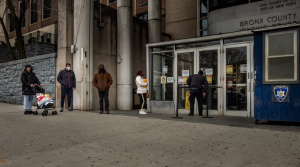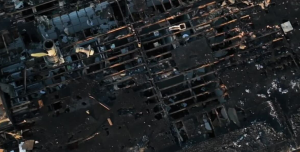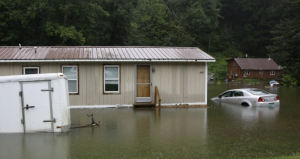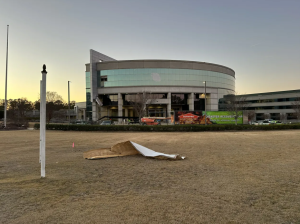
In Ludlow in Vermont, the cracking of summer storms used to comfort people. This was all before Tropical Storm Irene hit in 2011, and before the storm that dumped eight inches of rainfall on the 2,200-person village last month. A coming storm can create panic.
Brendan McNamara said that “we could lose it all again”. “.
The rains of last month pounded Ludlow with such force that the floodwaters washed away cars, destroyed roads and deposited mud and debris in homes and businesses. As a result, a main road had to be closed for several days.
The facility which ensures the safety of the drinking water in the village was constructed at an elevation and survived. The village’s sewage treatment plant did not fare as well. In the course of the flooding, road pieces were uprooted and buildings damaged. Sewage from the treatment tanks was also swept down the river. It is only able to handle half of its usual load.
Storms are more destructive and unpredictable due to climate change, with low-lying water treatment facilities and coastal sewer systems being overwhelmed.
Sri Vedachalam is the director of Corvius Infrastructure Solutions LLC’s water equity and climate resilient. He says that wastewater systems are designed to work in an old climate.
Vermont Public Water systems clean up after floods
Most wastewater treatment plants are located near bodies of water, where they can discharge stormwater and sewage.
Vedachalam explained wastewater systems tend to be located in the lowest part of a town. In many instances, when there is a large storm these are often the first areas to flood. “.
Inches of rain in a short period of time may cause sewer systems to clog, power outages, and service disruptions.
Flood maps produced by the government are outdated and do not accurately reflect climate change. First Street Foundation used a climate model that is widely respected to analyze 5,500 wastewater treatment facilities. Then, they examined whether these plants were likely to flood in the present and future.
The Associated Press identified the 25 plants that are most vulnerable by mapping current and future risk.
Some metro areas are particularly susceptible to flooding today. Sewage treatment facilities would also be at risk. South Bend-Elkhart-Mishawaka bridges Indiana and Michigan; Charleston-Huntington-Ashland bridges West Virginia, Ohio, and Kentucky; Madison-Janesville-Beloit in Wisconsin; Syracuse-Auburn, New York.
Water treatment plants in the United States are usually located close to waterbodies, including rivers and lakes.
We are affecting the water source by having water treatment plants close to where we obtain our water, said Darren Olson. He is a Chicago based water resource engineer, and a member of American Society of Civil Engineers.
Every two minutes in the U.S., an estimated six billion gallons or water is lost, enough to fill up 9,000 swimming pool.
Federal spending plans have committed billions to upgrade the water system in this country. However, the $55 billion that was allocated to upgrades as part of the Biden Administration’s 1 trillion dollar infrastructure bill is only a small fraction of the amount needed to combat climate-related risks to water and sewer systems. Olsen stated that other problems such as lead pipe leaks require immediate attention. Climate change is not the only cause of these problems.
Adam Carpenter, the manager of American Water Works Association’s energy and environment policy, said that while larger cities, such as Boston or Chicago, can increase rates to their customers in order to finance new projects, smaller towns and cities must look for other sources of funding, often via state and federal grant programs, to avoid increasing bills.
Vedachalam stated that “Wastewater Treatment Facilities are not cheap”. It costs several times the annual budget of a municipality to rebuild one.
The Tropical Storm Irene that ravaged Vermont 12 years ago cut off Ludlow’s wastewater plant. Joe Gaudiana is the chief operator of the village’s water and sewer system. According to him, it was rebuilt under the stricter guidelines set by the Federal Emergency Management Agency.
The backup generator of the plant was installed on a concrete block that measured as high as a basketball professional.
McNamara, the municipal manager in Ludlow is still trying figure out what Ludlow’s next move will be after July deluge.
McNamara said that, in small towns like ours sometimes geography and terrain limit your choices.
The town, he said, should construct a wall in the shape of a V to redirect floodwaters from his work area. This would protect both the people as well as the river against raw sewage.
To quickly and efficiently address the aftermath of an water-related catastrophe, flood remediation is essential. Floods are a disaster that can cause extensive damage to your house’s structure and its contents. Flooding services are comprehensive and offer solutions that minimize the effects of flooding. Water extraction, flood damage cleanup and restoration drying and mold remediation are all included in these services If you are looking for more information about our services here you will know more https://ncrestoration.ca/ You can reduce further damage and prevent the growth of mold by engaging professional flooding remediation. It is important to act quickly in order to protect your possessions, and the well-being and health of your family.





